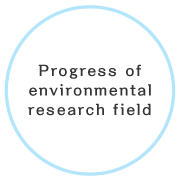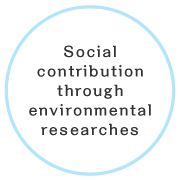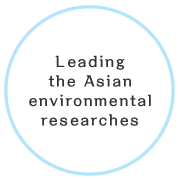ABOUT LaMer
A project by name Leading Academia in Marine and Environment Pollution Research (LaMer), is granted by MEXT, Japan to CMES for a six year period from 2016 to 2021, as the second Joint Usage / Research Center at Ehime University.
The aim of LaMer is to make constructive contributions to environmental research fields through well organized and efficient utilization of the es-BANK facility by this Joint Usage/Research, and systemizing the usage of our specimens collected from all over the world in the last more than five decades.
We now have advanced facilities, human resource and network of researchers gained through our previous research schemes such as the 21st-Century Center of Excellence Program from 2002 to 2006, the Global Center of Excellence Program from 2007 to 2011, and three Grants-in Aid for Scientific Research (S). Efficient use of the resources, facilities and knowledge acquired by these precious programs will make a great impact and induce invaluable progress in future upon the marine and environmental pollution research fields all over the world.
To achieve these aims, we are organizing most effective joint use of the frozen specimens archived in our es-BANK, and build up strategies for collaborative works with both domestic and foreign research groups. We are also systemizing joint usage of facilities and equipment at CMES to analyze chemical pollution and evaluate toxicity through collaborative and interdisciplinary works not only in our research field but also in related fields. We appreciate your great support and cooperation.
Joint Usage/Research Center of “Leading Academia in Marine and Environment Pollution Research (LaMer)”
Project Leader Hisato Iwata, Ph.D.
Professor of Center For Marine Environmental Studies,
Professor of Faculty of Science,
Professor of Graduate School of Science and Engineering,
Ehime University
My recent research interests are to understand the species diversity of the nuclear receptor-cytochrome P450 signaling pathway in fish, birds, and mammals, and to assess the effects of environmental pollutants on this pathway.
LaMer Aims

Aims of LaMer

Our aim is to contribute to the development of environmental research by organized use of specimens in the es-BANK for Joint Usage/Research, and systemizing efficient utilization of our specimens collected from all over the world for more than the last five decades.
At present we have advanced facilities, human resource and network of researchers acquired through the conduct of major research programs such as the 21st-Century Center of Excellence Program from 2002 to 2006, the Global Center of Excellence Program from 2007 to 2011, and three Grants-in Aid for Scientific Research (S).
Efficient use of these precious resources and facilities will bring appreciable progress and activities in marine and environmental pollution research fields in Japan and all over the world.
Outline of LaMer Plan
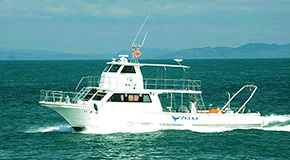
We are systemizing joint use of our archived and cold storage specimens in es-BANK so as to build up strategies for collaborative works with research groups both within and outside Japan.We also organize joint usage of the facilities and equipment at CMES for portraying chemical pollution and toxicity and for advancing the existing collaborative and interdisciplinary research not only in our research field but also in related arena.
Joint usage of our research boat ISANA for coastal survey, sampling, etc. will also contribute to the marine environmental research.
In addition to these facilities, academic exchange with Asian research institutions will embrace wider networks of researchers in chemical pollution and marine environmental research and play important roles to develop efficient joint usage and technology exchanges, as “the core base of our Asian environmental research”. With the basic principles, Interdisciplinary, Internationalization and Societal contribution that we follow for long years at CMES, we will further encourage and establish a leading and advanced international base of Joint Usage/Research.
Roles of LaMer
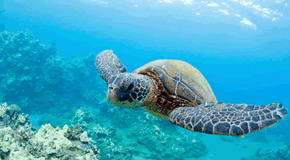
Establishing a permanent base for environmental research is essential for the progress of chemical pollution and marine environmental research in Asian countries, and also for academic and social contribution in this region. As one of our major themes, under LaMer, we will be systemizing strategic use of cold preserved specimens of es-BANK for promoting worldwide collaborations, enhancing ecological consciousness, strengthening linkages with local communities, encouraging young scientists, etc.
Contribution to the networks of related research fields
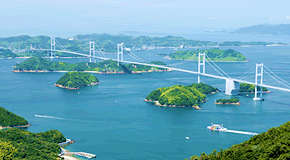
CMES has maintained an Environmental Specimen Bank since 2002, called es-BANK. It was established to archive environmental specimens collected from all over the world for the last fifty years, and provide them to researchers within and outside Ehime University. es-BANK holds 120,000 environmental specimens comprising more than 1200 animal and plant species collected from all over the world including Arctic and Antarctic Oceans. Joint Usage/Research of CMES will bring more opportunities to provide these specimens to wider range of researchers, and contributes to ecological education to students and public.
Our research boat, ISANA is suitable for survey within the Seto Inland Sea, which is a marine repository of environmental and ecological diversity formed as a result of its closed and complicated geographical features. This small sized boat has higher mobility in coastal and offshore areas and has advanced equipment for observations which are not possible on board larger vessels. For this reason, Isana has been used by a large number of research institutions both within and outside Japan. Joint Usage of ISANA also is expected to contribute for a better implementation of LaMer.
Contribute to related fields and create new fields

Our advanced equipment for measuring chemical pollution and toxicity analyses will systematically be maintained and improved for the Joint Usage / Research and contribute not only to the environmental chemistry field, but also to other inter- and multidisciplinary fields, such as marine science, biology, ecology, microbiology, medical science, pharmacy, veterinary science and agriculture.
Systemizing joint use of the specimens in cold storage in our es-BANK will promote international collaborative works. Further, integrating specimens collected from all over the world will manifest the preservation at es-BANK as the international core base facility. This scheme will have a great influence on academic advancement and also diversify our research fields.
Contribution to nurture young scientists

CMES has contributed a lot to support young scientists by opening up gateways to them in environmental research fields. The skills of our teaching staff and experience in nurturing young researchers will help in developing human resources.
It is also important to offer more educational opportunities for the researchers in the industrializing countries and to form network of human resources to solve their environmental problems, because fewer researchers in such developing countries might have had the opportunities to learn advanced environmental survey techniques and toxicity evaluation. Accepting or exchanging Asian students and young researchers under LaMer program will strengthen our linkages with them, and promote efficient usage of our facilities and equipment and research techniques necessary for Asian environmental research. These programs of developing human resource can fulfill the requirement and expectation of the industrializing countries from us.
Staff
*:Concurrent member
DirectorHisato Iwata![]() More
More
- Division of Environmental Dynamics
- Division of Environmental Chemistry and Ecotoxicology


